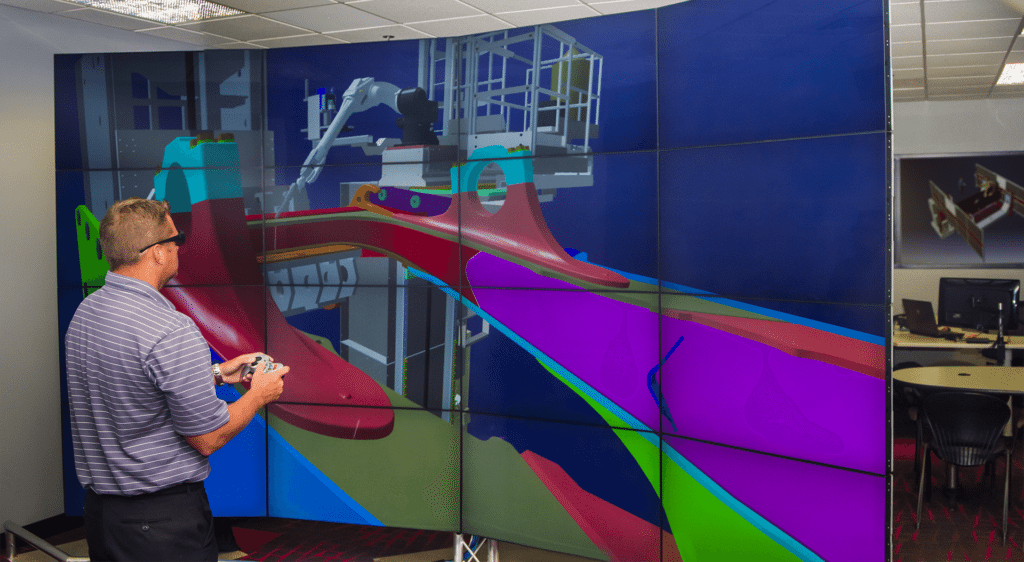For decades, the idea of using virtual solutions for robot simulation has been around, but it wasn’t always considered mainstream. Back in the 1980s, when robots were rare and incredibly expensive, simulation was primarily used by research groups to test theories and concepts. However, once robots became more affordable in the 1990s, things changed. Research teams began focusing on real-world experimentation, leaving behind virtual simulations as less practical. But over the last few years, with leaps in computational power, the private sector has rediscovered the value of simulation in robotics. This shift is now reshaping how companies approach automation and innovation. Before we dive deeper into why this matters, let’s take a moment to explore what virtual solutions centers are and how they operate. As part of some robotic systems integrators' offerings, Virtual Solutions Centers aim to replicate an entire robotic system and its surrounding environment as accurately as possible. This includes simulating every conceivable variable within the process to prove feasibility. These centers mimic real-world applications with high precision, allowing the robot's programming to be transferred directly from the simulation to the physical setup—ready to go live upon implementation. First and foremost, these centers offer proof of concept without constructing anything physically. By doing so, they eliminate design flaws early on and ensure that expected productivity levels are met. Moreover, they enable integrators to develop increasingly efficient systems capable of handling complex tasks while testing cutting-edge technologies safely in a virtual setting. Additionally, simulations lower barriers to entry for investment in automation, fostering further innovation in the robotics field. The adoption of Virtual Solutions Centers by robotics systems integrators marks a significant milestone in the evolution of robotic automation. Both manufacturers and integrators can reap substantial benefits from leveraging advanced simulation software. If you're curious to know more about robot simulations or want to see practical examples, consider exploring Genesis' Virtual Solutions Center for further insights. In conclusion, the integration of virtual solutions into robotics not only enhances efficiency but also opens doors for creativity and problem-solving. As industries continue to embrace automation, tools like Virtual Solutions Centers will undoubtedly play a pivotal role in driving progress forward. Stay tuned for updates on how these innovations shape the future of robotics! A Wood Fired Pizza Oven is a timeless piece of culinary equipment, revered for its ability to produce pizzas with unparalleled flavor and texture. Constructed from robust materials like brick, clay, or stone, these ovens are designed to withstand intense heat while providing even cooking surfaces. The heart of a wood fired oven is its domed interior, which allows for optimal heat retention and circulation, ensuring that each pizza is cooked to perfection. The unique appeal of a wood fired pizza oven lies in its ability to impart a distinct, smoky flavor to the pizza, something that cannot be replicated by gas or electric ovens. The high temperatures, often reaching up to 900 degrees Fahrenheit (482 degrees Celsius), create a crispy, blistered crust while keeping the toppings perfectly melted and caramelized. The process of building and maintaining the fire adds an element of artistry and tradition, connecting the cook to centuries of pizza-making heritage. Using a wood fired oven involves skill and patience. The fire must be carefully built and maintained to achieve the desired temperature. The pizza, typically cooked directly on the oven's hot surface, requires careful monitoring and occasional rotation to ensure an even bake. This hands-on approach not only enhances the cooking experience but also results in pizzas with a rustic, artisanal quality. Wood fired pizza ovens are more than just functional cooking tools; they are also beautiful additions to any kitchen or outdoor space. Their classic design and warm, glowing interior create a focal point for gatherings, drawing friends and family together around the promise of delicious, homemade pizza. The process of making pizza in a wood fired oven becomes a communal activity, filled with anticipation and enjoyment. Wood Fired Pizza Oven bbq,outdoor Wood Fired Pizza Oven,Pizza oven bbq outdoor,portable Wood Fired Pizza Oven,folding Wood Fired Pizza Oven gftop , https://www.gftopgrill.comVirtual Solutions Center: How Does Robot Simulation Enhance Robot Integration?

What Are Virtual Solutions Centers, and How Do They Function?
Why Are Virtual Solutions Centers Critical?
I found this article incredibly insightful! Understanding the role of virtual solutions in robotics helps demystify the process for newcomers like me. It’s fascinating to see how much impact simulations can have on streamlining operations and reducing risks. Kudos to the author for breaking it down so clearly!